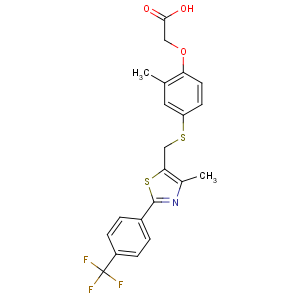Trenbolone is essentially a derivative of Nandrolone with some very significant differences in its chemical properties and strength. Trenbolone and its parent hormone Nandrolone both belong to a class/category of anabolic steroids known as 19-nor compounds, or 19-nors (short for 19-nortestosterone). 19-nor anabolic steroids are labeled as such because they lack the 19th carbon on their structure - this carbon exists on Testosterone and all other anabolic steroids with the exception of 19-nor compounds, such as Nandrolone and Trenbolone.
It is these additional modifications of double-bonds at carbon 19 and 11 that grant Trenbolone to be not just resistant to aromatization, but to become completely immune to it and be unable to interact what so ever with the aromatase enzyme. These modifications are also responsible for Trenbolone’s extremely enhanced andrognic strength (its ability to bind at a much greater strength to the androgen receptor) and its ability to remain highly resistant to metabolic breakdown in the body.
The chemical modifications described above result in Trenbolone becoming dramatically more potent of an androgen and an anabolic than its progenitor hormone Nandrolone, or even Testosterone. Testosterone is used as the baseline reference by which all other anabolic steroids are measured against and compared to (much like how the Celsius temperature scale utilizes the boiling and freezing point of water as the base reference for temperature measurement).
Trenbolone is notably more potent than testosterone, and has an effect that is as much as three times as strong on a milligram for milligram basis. Likewise we can expect to see some level of androgenic side effects with use of this compound. Oily skin, aggressive behavior, acne and hair loss are therefore not uncommon during a cycle with this steroid. The androgenic nature of this drug of course makes it a very risky item for women to use, the chance for virilization symptoms extremely high with such a potent androgen.
Trenbolone is also much more potent than testosterone at suppressing endogenous androgen production. This makes clear the fact that estrogen is not the only culprit with negative feedback inhibition, as here there is no buildup of this hormone to report here. There is however some activity as a progestin inherent in this compound, as trenbolone is a 19-nortestosterone (nandrolone) derivative (a trait characteristic of these compounds).
Permanent link: http://www.vvchem.com/sell/cas:10161-33-8,3295956.html











